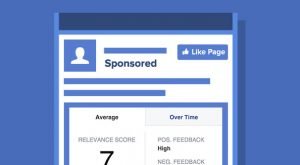 Written by ContentPowered.com
Written by ContentPowered.comAs more than a few small businesses have discovered over the years, Facebook advertising can be a costly mistake. If you don’t know what you’re doing or you’re not using all of your resources to the fullest, you might end up paying more than you should for ads that convert less than they could. The only redeeming factor is that this situation means there’s plenty of room for improvement.
Unfortunately, Facebook uses automated systems for everything. This means you’re never really in a position to speak to a human about your costs, which means you can’t negotiate. All of the changes you can make will be made on your end, either better using your tools or better utilizing the data you have.
1. Understand How Cost Structures Work
Facebook ads work un a number of different ways with payments for different objectives depending on what type of ad and what setup you’re using. They’re all fancy ways of measuring more or less the same thing; the money you’re spending and the effect you’re getting.
There’s really only one measurement you need to care about, and that’s the cost per customer acquisition. To understand this, you need to determine what it means to acquire a customer – whether it’s a site conversion, a mailing list opt-in or a Facebook like – and the cost it takes to get that objective.
There’s a lot that goes into this calculation, so this is a good time to turn over the explanation to Wishpond.
2. Promote, Don’t Boost
The boost post button on Facebook is essentially “Promote a post for dummies.” It’s a limited, restricted, downright ineffective version of the Promote Post option, with the one benefit in that it’s quick and easy to set up. You know what else is quick and easy? Sending my PayPal $100. It won’t get you any recognition or advertising, but then, neither will boosting a post.
Promoting a post gives you a lot more options, and though they’re daunting at first, they’re really quite simple to get to know. Once you’ve learned them, you’ll wonder how anyone would ever bother with the boost post button.
3. Use the Learn More CTA
Facebook offers a handful of CTA button options, and it might sound like a good idea to customize the button you want to use to the objective you’re promoting. If you want users to download an app, you’d want to use the app objective, wouldn’t you?
Feel free to test this yourself. In fact, you should always take any piece of advice you hear online with a grain of salt and test it yourself. Still, when in doubt, go with the basic “lean more” button. It works for just about everything and it converts better than just about everything, including not having a button at all.
4. Narrower is Better
When you’re adding targeting factors to your audience, you’re going to see Facebook’s estimate of how many people are in that target audience. Facebook would absolutely love it if you use an audience of millions; they can share your ad with millions of people, and of those millions, you’re guaranteed to have your ad spend eaten up by vaguely interested people.
The problem is, those people probably don’t really want your product, they just want to see what’s at the other end of the ad. When you narrow down your ad targeting, you’re forcing Facebook to display your ad to people who are more likely to want what you’re selling. This boosts your value per click, which means a higher ROI.
5. Geolocate
The tighter you focus your geolocation, the more focused you can make your message. It’s a lot harder to target an entire country than it is to target a single city. Even if you’re a global brand, you can segment your message down and test variations for individual locations easily enough.
6. Consider Quality and Passion
When you’re targeting people, would you rather your message reach 10 people who only vaguely care about what you have to say, or one person who is hanging on every word? Even if you manage to convert one of those ten people, they aren’t going to go on to be a brand advocate, recommending you to their friends. They’re going to be in a sort of consumer limbo, valuable to you once and never again. Target the people with passion.
7. Target Lookalikes
You have an audience already, and that audience is made up of people. Those people use Facebook, and Facebook tracks a lot of information about them. The information they track can be used to create a lookalike archetype. The idea is that you don’t have every single person matching that description following you. Therefore, there are people just like your followers out there on Facebook, who may be very interested in following you. A lookalike audience takes your audience and creates a list of people matching that description who don’t follow you, and displays your ads to them.
8. Test. Test. Test.
Test. Test. Test some more. Do you think you’re done testing? You’re not. Go back and test some more. Sometimes all it takes is a slight shift in color, alignment of the image, body copy or preview image to make a huge difference.
Every ad you run should actually be a set of ads with different variables being tested against a control. Every time you run a set of ads, you’ll find one works better than the others. Yes, you should go all-in on that one and run it more, but you should also test more variations on that ad and see if you can further improve it. Always be testing, always be improving.
9. Capitalize on Opportunities
Over time, your advertising will decay. This means you can’t ride the same ads for a long time without users getting used to their presence and tuning them out. You need variation and change to attract attention.
What this means is that, when you strike upon an opportunity that’s making a great, positive ROI, you need to capitalize on it. Consider that you have two options. Option 1 is to watch the ROI and run the same ads at the same spend over and over, until that ROI begins to dip. Option 2 is to boost your spend and run that ad as much as possible while you can, before that ROI dips.
The key here is to realize that 99% of the time, the ROI isn’t going to dip if you’re boosting your spend on the ad frequency. You’ve hit upon a good ad, and you need to capitalize on it before it decays over time. Sure, it might decay a little faster when you pump up the volume, but you make more money in a shorter time and the decay isn’t so bad that it cuts you off early.
10. Have Patience
Above all, there’s one thing you need to succeed with Facebook marketing; patience. Sometimes, your ads will hit a hotspot of activity and will return a positive value in a day. Other times, it can take months of plugging away to get into positive territory, with the caveat that you’ll continue to grow on your established curve. If you’re not taking the time to rest, iterate, test and run campaigns, you’re going to be wasting time and money.
Possibly the number one problem that businesses run into is looking for immediate results. Everyone hears so much about how beneficial Facebook is that they forget that it takes time to get up and running.




